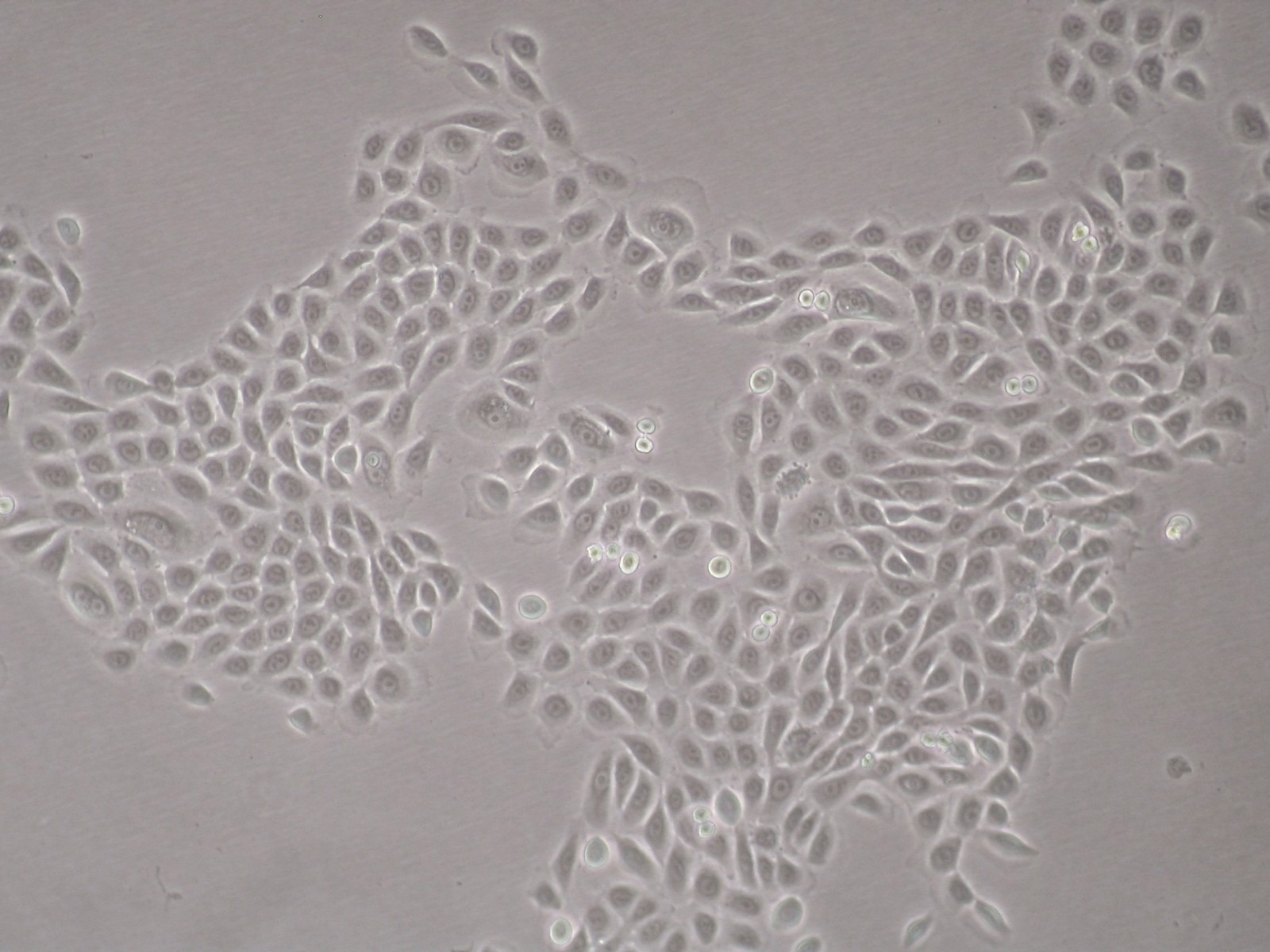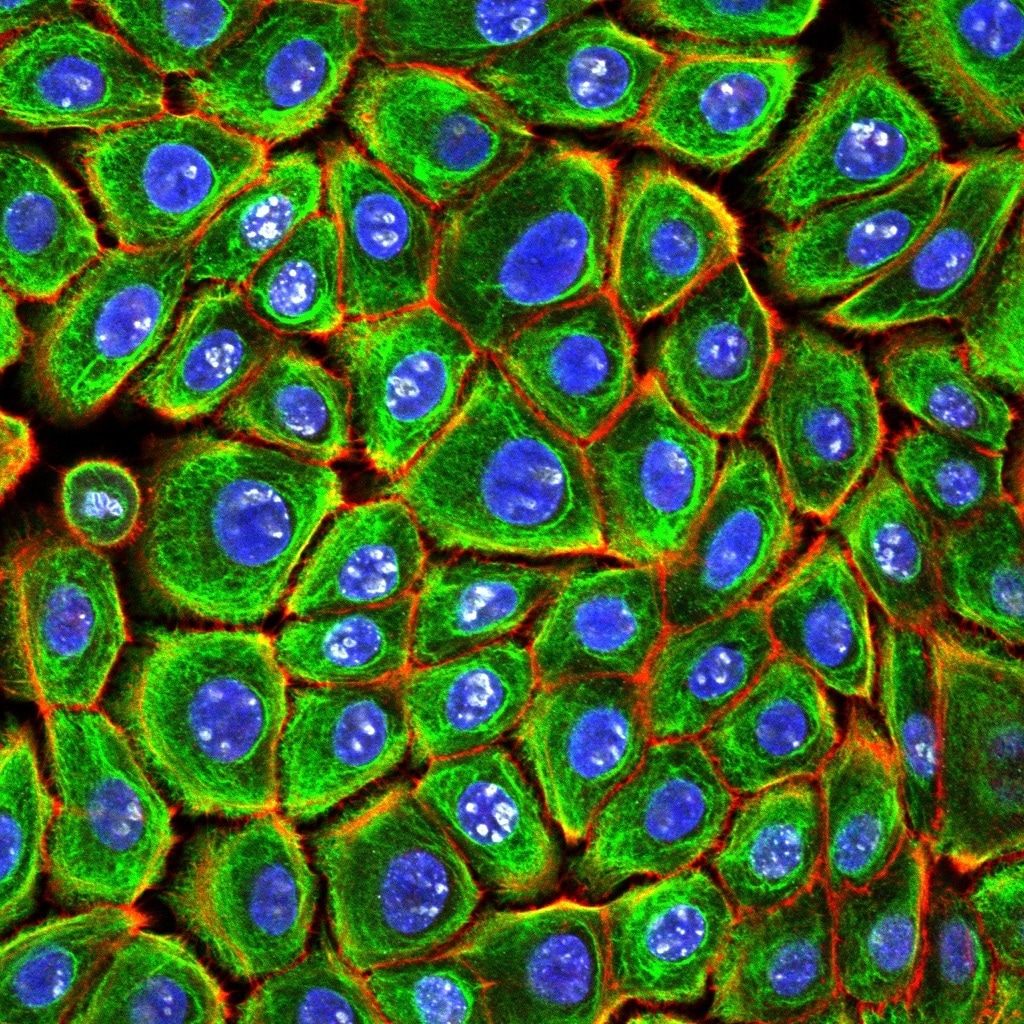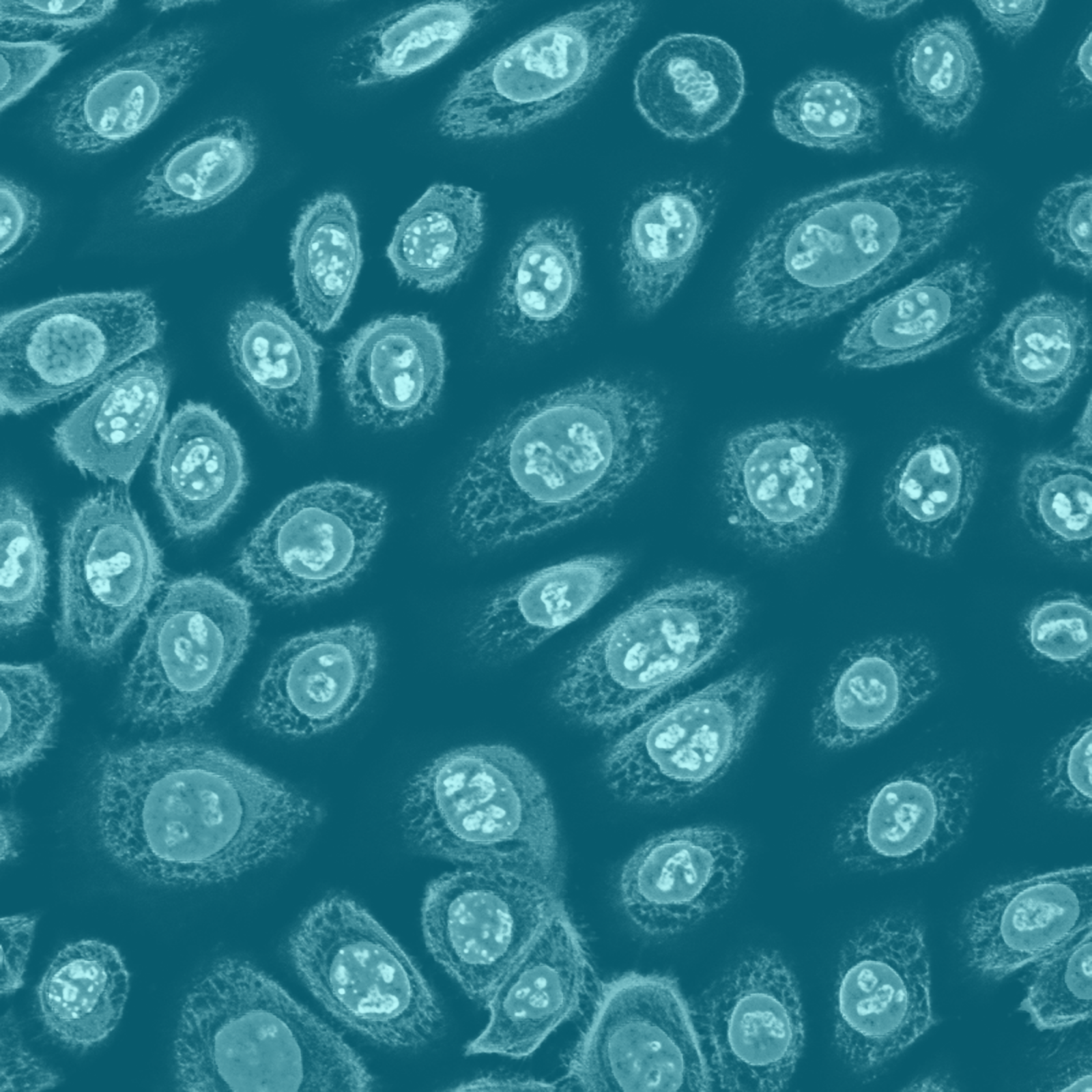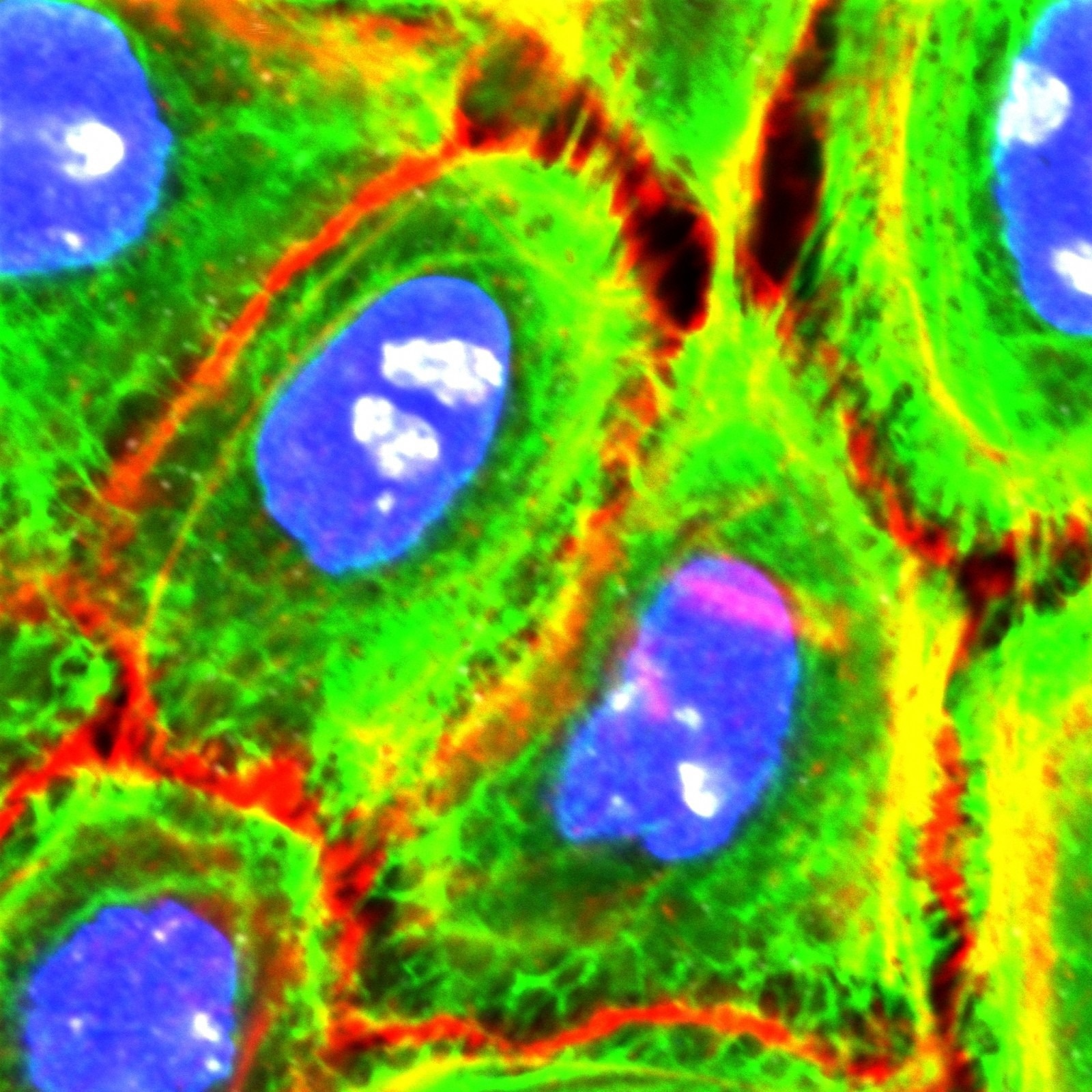Overview
For conducting keratinocyte biology research, MatTek’s primary Normal Human Epidermal Keratinocytes (NHEK) and Growth Medium (NHEK-GM) offer an ideal platform.
MatTek’s NHEKs provide quality and accessibility for the study of inflammation, oxidative stress, toxicity and phototoxicity, wound healing, drug screening, and tissue modeling and are available from neonatal or adult donors of various ethnicities.

Normal Human Epidermal Keratinocytes (NHEK), 10×. Image Credit: MatTek

NHEK-CRY-NEO – Cytokeratin 14 (green), Phalloidin (red), DAPI (blue), 60×. Image Credit: MatTek

Normal Human Epidermal Keratinocytes (NHEK-CRY-NEO), 60×. Image Credit: MatTek

NHEK-CRY-NEO – Cytokeratin 14 (green), Phalloidin (red), Ki67 (white), DAPI (blue), 180×. Image Credit: MatTek
Features
NHEKs from MatTek are isolated from donor tissue from neonates (NHEK-CRY-NEO) or adults (NHEK-CRY-AD), and they are then cryopreserved as primary cells. The epidermal keratinocytes are guaranteed to produce at least 15 population doublings when cultured in MatTek’s NHEK-GM Growth Medium in accordance with MatTek’s NHEK-CRY protocols.
They also have a guaranteed thaw viability of 75%. Cobblestone morphology and cytokeratin expression are two characteristics of NHEKs.

Primary Human Epidermal Keratinocytes cultured in NHEK-GM were stained for Keratin 14 (pink), Phalloidin (blue), and Ki67 (yellow). Image Credit: MatTek